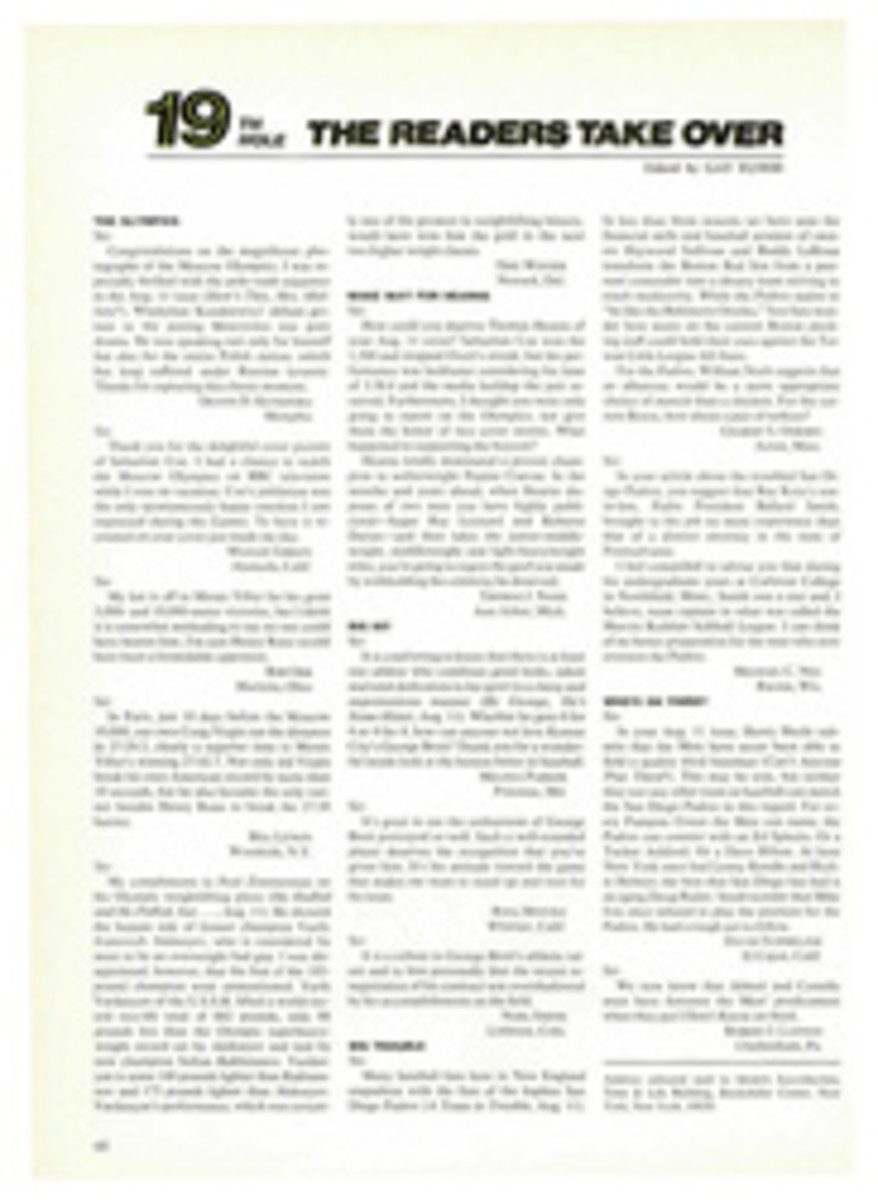
Utilizing the Present Tents
It may be one's reaction to the materialism of present times, it may derive from ancient memory of a nomadic past, but a tent has an aura of freedom and adventure that appeals to many. Where backpacking, climbing, fishing or even lawn parties are concerned, there's nothing like a spread of canvas or nylon to provide a mood of getting away from it all. And thanks to science, the tents of today are a far cry from those serviceable but cumbersome works of old Omar.
Many of the improvements reflect the experience and expertise of a small group of sporting-goods manufacturers in the Northwest (Sierra, Early Winters, North Face, JanSport, Gerry, among others) who specialize in mountaineering equipment. By incorporating rip-stop nylon, Gore-Tex fabrics, fiber glass and aluminum poles in innovative designs, these pioneers have produced tents that are lighter, stronger, drier, more durable and just plain prettier than the olive-drab canvas of yesteryear.
The Northeast has by no means been shut out. Indeed, one of the most widely admired of American tentmakers is Bill Moss, whose factory is situated in an old mill beside the Megunticook River, in Camden, Maine. Moss Tent Works, Inc. turns out 30 different models, ranging in size from 22 to 1,500 square feet—all designed by the 57-year-old Moss. The Tent Works people really believe in their product. Four of the employees live in Moss tents on the three wooded acres that surround the factory. One of them, Rico Eastman, has camped out in an Optimum 200 for almost two years.
"Considering the Maine winter, it sounds extraordinary," says Moss. "But Rico has an insulated floor, a woodburning stove, a double bed, a big dresser and no intentions of moving out."
Moss became a tentmaker in a rather circuitous manner. "As a kid I hated camping," he says, "but I was always making a hut or some kind of shelter in the woods or up in the attic. I did a lot of camping in college, but my first experience with canvas was as a painter. Then I became involved with sculpting."
He went on to construct walk-in environmental sculpture. Then in 1957, while working as an artist for the Ford Times, a Ford Motor Company publication, Moss designed a Pop Tent. Shortly afterward, he left Ford and became a full-time tent designer.
As might be expected, Moss' approach to his tent designs is that of an artist and sculptor. "On large structures I'll hire an engineer after I've done the design, but not before," he says. The results are esthetically pleasing, geometrically shaped shelters that have attracted interest far beyond the Maine woods. Among Moss' enthusiastic clients are Arabs in Abu Dhabi who have bought his Optimum series for use in the desert.
Moss also designs for the oil-hungry West. "In spite of the energy crunch," he says, "people are still going to go camping, but they won't pay for a gas-guzzling camper or trailer." Thus the Base Camp (below), a small tent designed to complement a compact car. The tent weighs only nine pounds and folds down to be no larger than a backpack, but it opens up into a canopy that is roomy enough for a family. The shell is stretched over a fiberglass rod, and extended over the top of the car and secured by closing the car door on the opposite side from the tent. This makes both tent and car part of one shelter. A "bedroom" can be snapped on the overhead arch for privacy.
Moss is continually working on new concepts. Right now Tent Works is building a solar tent-studio to be used year-round by the factory's design workshop. The structure will be 60' x 60' with a 20-foot central arch. "We're using a new material that allows about 87% light transmission," says Moss, "and we're digging out part of a hill and will store heat for the tent in a concrete wall." Moss expects the tent to last 12 to 15 years.
"I'm also working on a solar shed to replace a barn, something in which a person could store things, or work on a boat or car," he says. "Most building materials are too expensive. What I'm looking for is a structure everyone can afford."
PHOTO
LANE STEWART
With a 4' x 6' "bedroom" attached, Moss' Base Camp sleeps four or more ($299).

